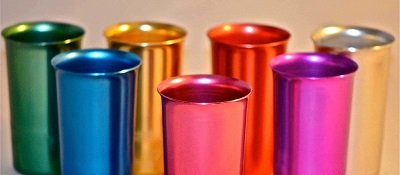Aluminum is one of the most commonly used materials in almost all industries. No wonder it is strong, lightweight, durable and environmentally friendly. After anodizing, it becomes even more attractive in its properties, which is actively used in the manufacture of advertising structures , toys, elements for household appliances, transport, etc. What is it represents the process of sealing and protecting aluminum profiles? How does it affect the characteristics of the final product?
What is anodizing?
Anodizing is a complex process in which the metal is subjected to a special electrochemical treatment. The aim is to obtain a high purity, crystalline coating that is characterized by increased hardness and resistance to corrosion and abrasion. Research confirms that the thickness of the anodic coating is one of the most important factors in determining the pitting resistance of anodized aluminum. An additional advantage is an increase in the aesthetic value, as well as the ease of obtaining different colors, that is, in addition to the technical function, the elements acquire a design, decorative character.
How is the process going?
Anodizing can be divided into several sequential sub-processes. These are degreasing, alkaline etching, anodizing, electrochemical painting and sealing.
Degreasing - for cleaning the surface from dust, grease, cooling and polishing liquids, from processing processes and small dirt. It is carried out with the use of quality detergents.
Etching. The purpose of the process is to remove minor scratches and abrasions, as well as to make the surface matte (up to about 12 gloss). Etching takes place with an aqueous solution of sodium hydroxide.
Anodizing is a special phase in which an oxide layer forms on the anodized surface. Sulfuric acid solution plays an important role in this process. For anodizing, a direct current of 17-24 A is most often used. The end result is an almost invisible porous oxide layer up to 30 microns thick. This structure allows you to effectively paint the coating.
Electrochemical painting: thanks to a bath with tin and sulfuric acid, aluminum elements can change their color - from natural through beige to brown and black.
Sealing - designed to protect the formed layer of aluminum oxide from the negative effects of weather and physical and chemical conditions. This takes place in two stages. First, the pores of the oxide are filled with nickel salts, and then they undergo a hydration process (forming boehmite on the surface), making the surface smooth and shiny.
After completing strictly defined technological stages, the profiles and parts undergo quality control, which is carried out by an experienced employee. The leak test is carried out using the drop test method. Specially prepared templates make it easier to check the color. If accepted standards are not met when colors are out of tolerance, they are further processed until a satisfactory effect is obtained.
There is also a shot blasting process. It is an alternative to chemical etching in the standard anodizing process. The absence of etching helps to eliminate the problem of soda rinsing out of small holes in the profiles, thus improving the quality and expanding the offer.
Hydro is a world leader in the production of aluminum solutions. With 35,000 employees in over 40 countries, it combines local technical expertise with international reach and unrivaled research and development potential. The company's mission is to produce the highest quality products, therefore, in order to meet customer expectations, it focuses on innovations developed by the leaders of the aluminum processing industry. One of them is the elaborate anodizing process. Hydro products comply with all QUALANOD standards, which guarantees repeatability and the highest quality coatings.
One Process - Multipurpose
Anodizing significantly improves the properties of aluminum, which makes this material readily used by manufacturers in many industries. Anodized aluminum is highly regarded by the shipbuilding industry for its corrosion resistance. Mobile phone manufacturers as well as the automotive industry are looking forward to it. It is also used in the LED industry or related to optics. Colored aluminum is often used by manufacturers of furniture and other design elements. Aesthetics are also appreciated by specialists in the construction industry - a glossy surface is used to decorate the facades of buildings.





